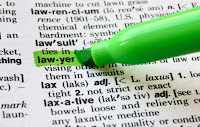Disputes Less Suitable for Mediation
.jpg)
Hal Abramson, the author of Mediation Representation: Advocating in a Problem-Solving Process , suggests that the following types of disputes or circumstances make mediation less desirable: · The party needs to establish binding precedent; · The party needs to deter future claims by establishing a “hard-ball litigation – no settlement reputation” (aka the Walmart strategy); · The party seeks validation or vindication by a person in authority who declares that the client was blameless, but the other party was a low-down, dirty SOB; · The party wants or needs to go for a litigated “jackpot” damage award, no matter the statistical chance of winning that award; · The parties are embroiled in a value-based conflict on which they see no room for ...





.JPG)

.JPG)
.JPG)
